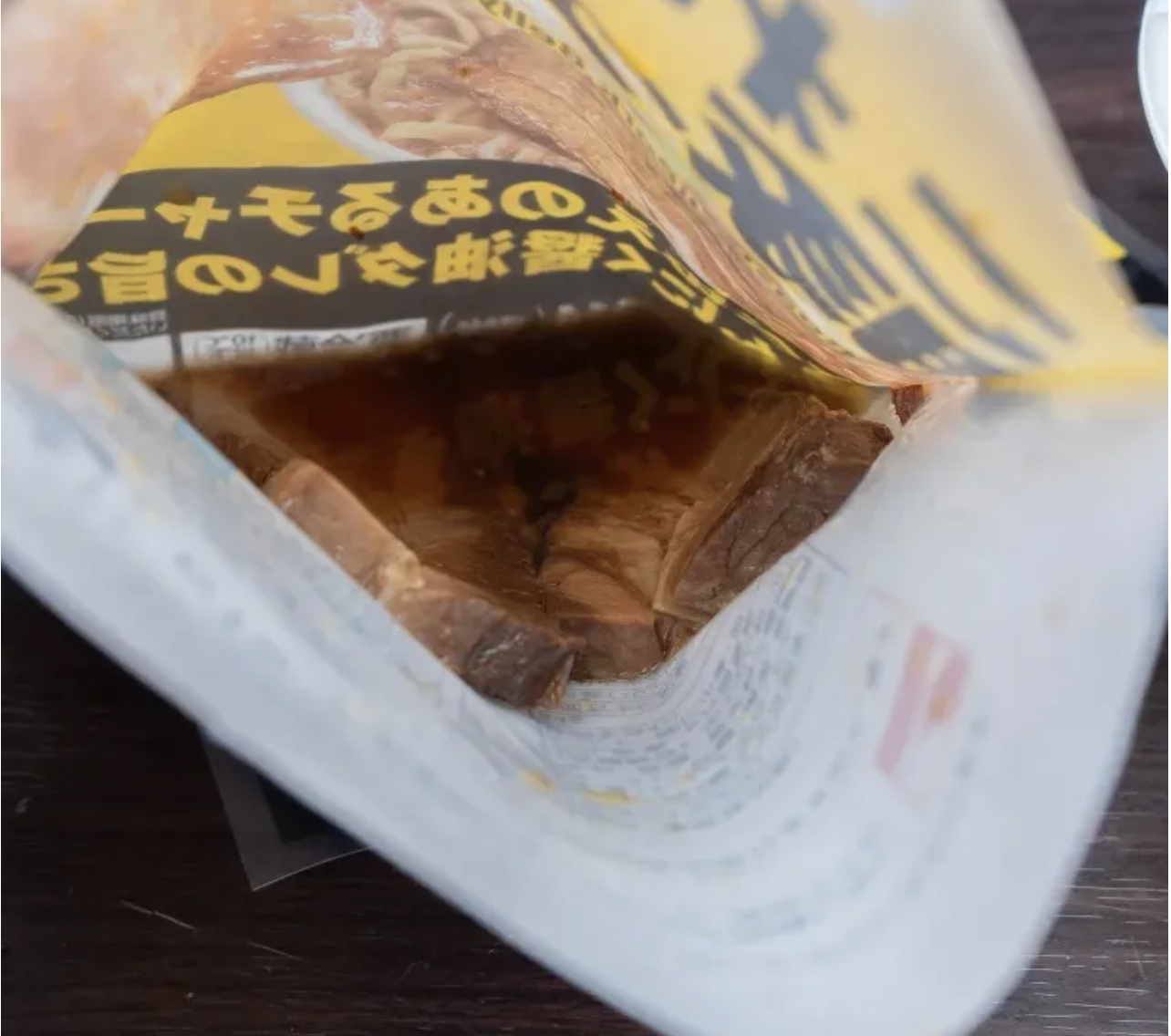In a lot of ways, Japanese convenience stores are a trove of edible treasures for ramen lovers. Between the standard instant cup noodle offerings, special limited-time flavors, and more upscale ramen bowls with fresh noodles and broth that you heat up in the microwave, you’ve got plenty of ways to get your fix.
There’s an unfortunate downside to that, though. If you like ramen, odds are you also like chashu, the strips of roast pork belly that are the exalted royalty of ramen toppings. While Japanese convenience stores have dozens of different ramens with tasty broths, pretty much all of them are severely lacking in the chashu department. Most instant varieties have no chashu at all, and even when the fresh-noodle bowls have some, it’s often just a single, thin strip.
All of which brings us to 7-Eleven’s new Kore zo Buta, or “THIS is Pork!”
▼ The package’s English text just says “Roasted Pork Belly,” which doesn’t have nearly as much impact, but we’re here to eat, not to read.

Kore zo Buta gives you two pre-cooked, ready to eat slices of chashu in a sealed pouch. It does need to be kept refrigerated, but it doesn’t need to be cooked, though 7-Eleven says you can warm the unopened package up in a pot of just-under-boiling (90 degrees Celsius) water for a minute if you’d like. They do caution, however, that the package should not be placed in the microwave.
Kore zo Buta is priced at 321 yen a pack, and part of 7-Eleven’s higher-end Premium Seven store brand of prepared foods. We decided that meant we should find a worthy chashu opponent to compare against, and so we bought the meatiest ramen that our local 7-Eleven branch had in stock that day, the Tomita-produced Jumbo Pork Ramen (691 yen).
▼ Tomita is a popular ramen restaurant located in the town of Matsudo, Chiba Prefecture, that’s famous for hearty ramen.

Taking the lid off of the Tomita/7-Eleven collaboration ramen, we saw what is, by convenience store ramen standards, a pretty nice-looking piece of chashu.

Then it was time to open up our Kore zo Buta. Even before we took the chashu out, the enticing aroma of its rich soy sauce-based marinade drifted up to stimulate our appetite and boost our expectations.

Viewed from above, it might not look like the Kore zo Buta (これぞ豚) is much bigger than the chashu that already comes in the Tomita ramen (とみたの豚).

Remember, though, that the Kore zo Buta pack has two slices of chashu in it. Not only that, while the Tomita pork was very thin…

…each slice of Kore zo Buta is significantly thicker.

Having a lot of chashu doesn’t mean much if it’s not good-tasting chashu, though. So we were very happy to find that Kore zo Buta delivers not just on quantity, but on quality too. The strength of its flavor is just right. Kore zo Buta’s presence doesn’t get lost in the ramen broth, nor does it overpower the other ingredients and bully them out of playtime on your taste buds. It’s also surprisingly tender, not at all tough or dry like you might expect from pre-made pork.

Overall, Kore zo Buta is definitely worth its price. It’s a great way to elevate convenience store ramen into something a little extra special when you want to splurge or reward yourself, and we can’t wait to try out other ways to use it, like maybe making a chashu-don rice bowl.
Photos ©SoraNews24
Read more stories from SoraNews24.
-- This amazing bowl of meaty ramen? Made entirely with Japanese convenience store stuff
-- We try gold-topped ramen, the newest gourmet noodle treat in Tokyo and Kyoto【Photos】
-- If you want chashu without noodles, this Tokyo restaurant chain is the place for you【Taste test】
© SoraNews24



6 Comments
Login to comment
falseflagsteve
Don’t have to refrigerate, imagine the chemicals in that.
/dev/random
That's exactly the opposite of what the article says.
Gene Hennigh
Ramen. Pork belly. I'm in. Sometimes when there's not a lot of time to eat, you could come back from lunch ready to go. This sounds good.
grund
It actually looks pretty good.
wallace
I roast a block of Chashu Pork in my oven with a rotisserie taking about one hour to make it crispy on the skin.
kohakuebisu
Its hard to find pork with skin on in Japan. Okinawas eat it, I think its called "rafti", but noone else does. I think Meat Guy and a couple of online folks do it, but none in my local supermarkets. My local butcher doesn't sell it either.
You need to make it in a pan, but our new favourite cheapo ramen is a miso one by Nissin. Its a slightly posher version of the Rao ones they sell in regular supermarkets. We buy it online because its not available here. The product name is 極楽ラ王 濃厚香熟味噌. If I had unknowingly had the same soup and noodles at a miso ramen joint, I would have thought it was a good one and made a mental note to go back.